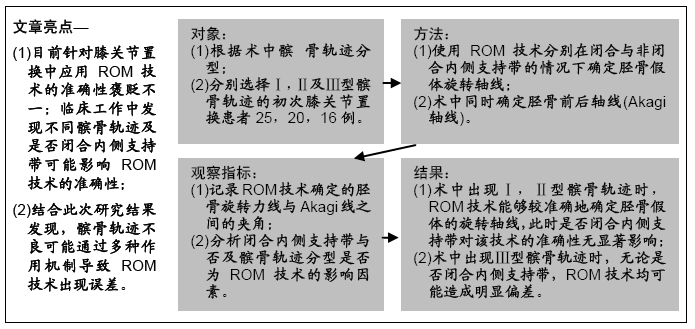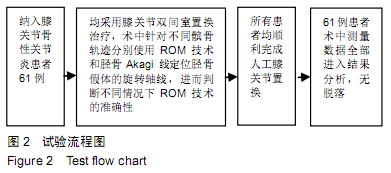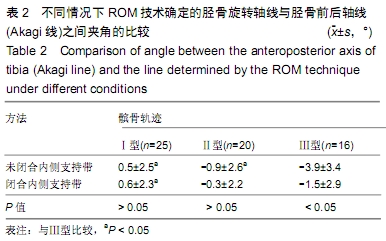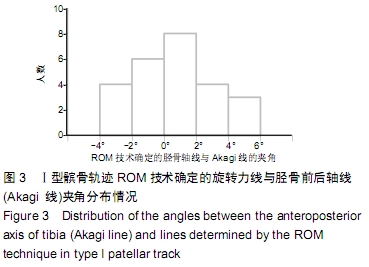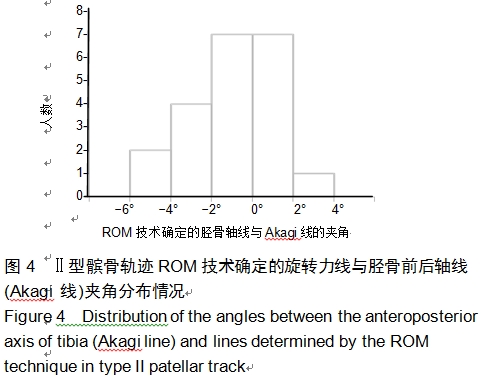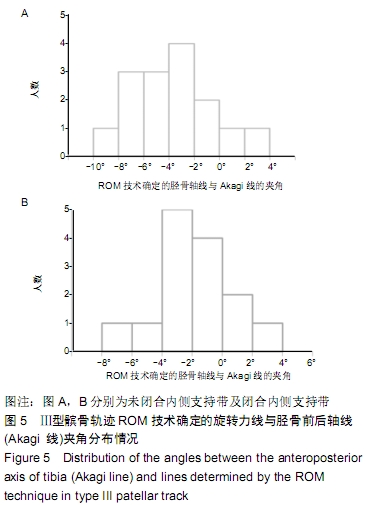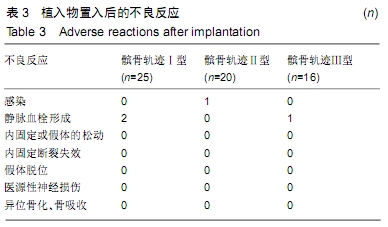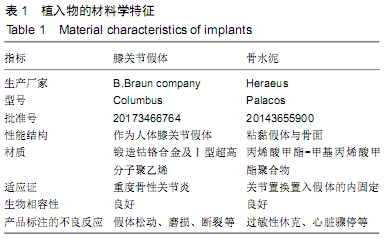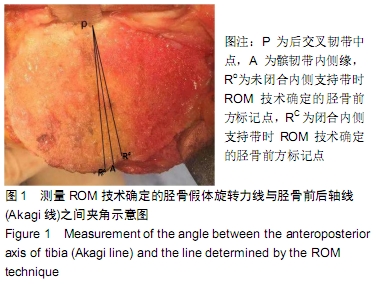[1] NAKAHARA H, OKAZAKI K, HAMAI S, et al. Rotational alignment of the tibial component affects the kinematic rotation of a weight-bearing knee after total knee arthroplasty. Knee.2015;22(3):201-205.
[2] VAN DAMME G, DEFOORT K, DUCOULOMBIER Y, et al. What should the surgeon aim for when performing computer-assisted total knee arthroplasty? J Bone Joint Surg Am. 2005;87 Suppl 2:52-58.
[3] VAN GENNIP S, SCHIMMEL JJ, VAN HELLEMONDT GG, et al. Medial patellofemoral ligament reconstruction for patellar maltracking following total knee arthroplasty is effective. Knee Surg Sports Traumatol Arthrosc. 2014;22(10):2569-2573.
[4] WATANABE S, SATO T, OMORI G, et al. Change in tibiofemoral rotational alignment during total knee arthroplasty. J Orthop Sci. 2014;19(4):571-578.
[5] HUDDLESTON JI, SCOTT RD, WIMBERLEY DW. Determination of neutral tibial rotational alignment in rotating platform TKA. Clin Orthop Relat Res.2005;440:101-106.
[6] AKAGI M, MORI S, NISHIMURA S, et al. Variability of extraarticular tibial rotation references for total knee arthroplasty. Clin Orthop Relat Res. 2005;436:172-176.
[7] MA Y, MIZU-UCHI H, USHIO T, et al. Bony landmarks with tibial cutting surface are useful to avoid rotational mismatch in total knee arthroplasty. Knee Surg Sports Traumatol Arthrosc. 2018;27(5): 1570-1579.
[8] IKEUCHI M, YAMANAKA N, OKANOUE Y, et al. Determining the rotational alignment of the tibial component at total knee replacement: a comparison of two techniques. J Bone Joint Surg Br. 2007;89(1): 45-49.
[9] AKAGI M, MATSUSUE Y, MATA T, et al. Effect of rotational alignment on patellar tracking in total knee arthroplasty. Clin Orthop Relat Res. 1999;366:155-163.
[10] BARRACK RL, SCHRADER T, BERTOT AJ, et al. Component rotation and anterior knee pain after total knee arthroplasty. Clin Orthop Relat Res. 2001;392:46-55.
[11] HANADA M, FURUHASHI H, MATSUYAMA Y. Investigationof the control of rotational alignment in the tibial component during total knee arthroplasty. Eur J Orthop Surg Traumatol. 2019;29(6):1313-1317.
[12] OHMORI T, KABATA T, KAJINO Y, et al. A proposed new rotating reference axis for the tibial component after proximal tibial resection in total knee arthroplasty. PLoS ONE. 2018; 13(12):e0209317.
[13] BALDINI A, INDELLI PF, DE LUCA L, et al. Rotational alignment of the tibial component in total knee arthroplasty: the anterior tibial cortex is a reliable landmark. Joints. 2013; 1(4):155-160.
[14] SAHIN N, ATICI T, KURTOĞLU Ü, et al. Centre of the posterior cruciate ligament and the sulcus between tubercle spines are reliable landmarks for tibial component placement. Knee Surg Sports Traumatol Arthrosc. 2013;21(10): 2384-2391.
[15] FANG CH, CHENG CK, QU TB, et al. The posterolateral corner-locked technique is applicable in a chinese population regarding the tibial component rotation alignment in total knee arthroplasty. J Knee Surg. 2019; doi: 10.1055/s-0039-1678536.
[16] INSALL JN, WINDSOR RE, SCOTT WN, et al. Surgical techniques and instrumentation in total knee arthroplasty. Surg Knee. 2003;28(2): 799-802.
[17] ECKHOFF DG, METZGER RG. Malrotation associated with implant alignment technique in total knee arthroplasty. Clin Orthop Relat Res. 1995;321:28-31.
[18] KIM JI, JANG J, LEE KW, et al. Anterior tibial curved cortex is a reliable landmark for tibial rotational alignment in total knee arthroplasty. BMC Musculoskelet Disord. 2017;18(1): 252-257.
[19] ROSSI R, BRUZZONE M, BONASIA DE, et al. Evaluation of tibial rotational alignment in total knee arthroplasty: a cadaver study. Knee Surg Sports Traumatol Arthrosc. 2010;18(7): 889-893.
[20] SAFFARINI M, NOVER L, TANDOGAN R, et al. The original Akagi line is the most reliable: a systematic review of landmarks for rotational alignment of the tibial component in TKA. Knee Surg Sports Traumatol Arthrosc. 2019;27(4): 1018-1027.
[21] AKAGI M, OH M, NONAKA T, et al. An anteroposterior axis of the tibia for total knee arthroplasty. Clin Orthop Relat Res. 2004; 420: 213-219.
[22] SAHIN N, ATICI T, ÖZTÜRK A, et al. Accuracy of anatomical references used for rotational alignment of tibial component in total knee arthroplasty. Knee Surge Sports Traumatol Arthrosc. 2012;20(3): 565-570.
[23] WILLIAMS R, THOMAS A, BAJADA S, et al. Reliability evaluation of inter-eminence line, akagi and dalury lines for intraoperative tibial rotation: an osteology-based study. Knee. 2018; 25(3): 453-458.
[24] KAWAHARA S, MATSUDA S, OKAZAKI K, et al. Relationship between the tibial anteroposterior axis and the surgical epicondylar axis in varus and valgus knees. Knee Surge Sports Traumatol Arthrosc. 2012; 20(10):2077-2081.
[25] 陶坤,吴宇黎,祝云利,等. Akagi胫骨前后轴在全膝关节置换术中的定位作用[J].中华骨科杂志,2009,10(29): 905-909.
|
